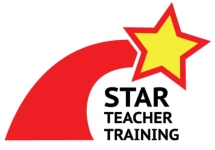At the start of new semesters and school-years first impressions are always important. They’re times when EFL students are all curious about the new teacher. Children often assault new teachers with dozens of questions as soon as they enter a new classroom. It’s important to satisfy that curiosity quickly and with an interesting activity to start building rapport with each of your classes. Intro Mind Maps are a great option for EFL ice breakers in large public primary classes.
Intro Mind Maps are one of the quickest and easiest ways to start building rapport with EFL learners. They’re great for displaying key information about yourself and pulling question language from students.
Related Post: Two Truths and One Lie for Public Primary School
How to do EFL Intro Mind Maps
First, write your name in the middle of the board and circle it. Then write answers to common, level-appropriate questions around your name.
Tell students that these are answers to questions about you. They should think and raise their hands to ask the questions. As you call on students and answer their questions you can add more information as appropriate. Keep calling on students until they’ve asked all the questions, or until it seems they’ve reached the limits of their abilities. You can then help as needed.

You should also try making mental notes about your students. Who raises their hands? Who can ask the more difficult questions? How many hands go up at a time? This is all important information you’ll need for understanding each class.
Remember to keep the material level appropriate for your students’ age and abilities. No past perfect tense for Grade 1!
Common Questions include:
- How old are you?
- Where are you from?
- Do you have any brothers or sisters?
- What is your favorite food/color/animal/sport/movie?
- What hobbies do you have?
- How tall are you?
- Do you have a boyfriend/girlfriend/husband/wife?
EFL Ice Breakers Tips
Keep it Short: I usually don’t include more than six items in the first level. The activity shouldn’t last more than a few minutes so you don’t take time from other lesson objectives or start to bore your students. If they’re particularly curious (or you’re really interesting) you can always do the activity with new items in the next lesson.
No Corrections: This isn’t the time to correct your students’ language. If they make any mistakes just move on with answering their question. You don’t want to embarrass a student in your first lesson. Similarly, if a student asks the wrong question ( it isn’t one you’re looking for) it’s fine to answer them and also the question you were looking for.
Student to Student: In the future you can also have students complete their own mind maps. They can use these with each other in small groups or in pairs. Some teachers of smaller classes also like to have a student or two come up and introduce themselves each lesson. Once everyone is familiar with the format it can be quite flexible and fast as well.
What other Ice Breakers do you use in your classes?






